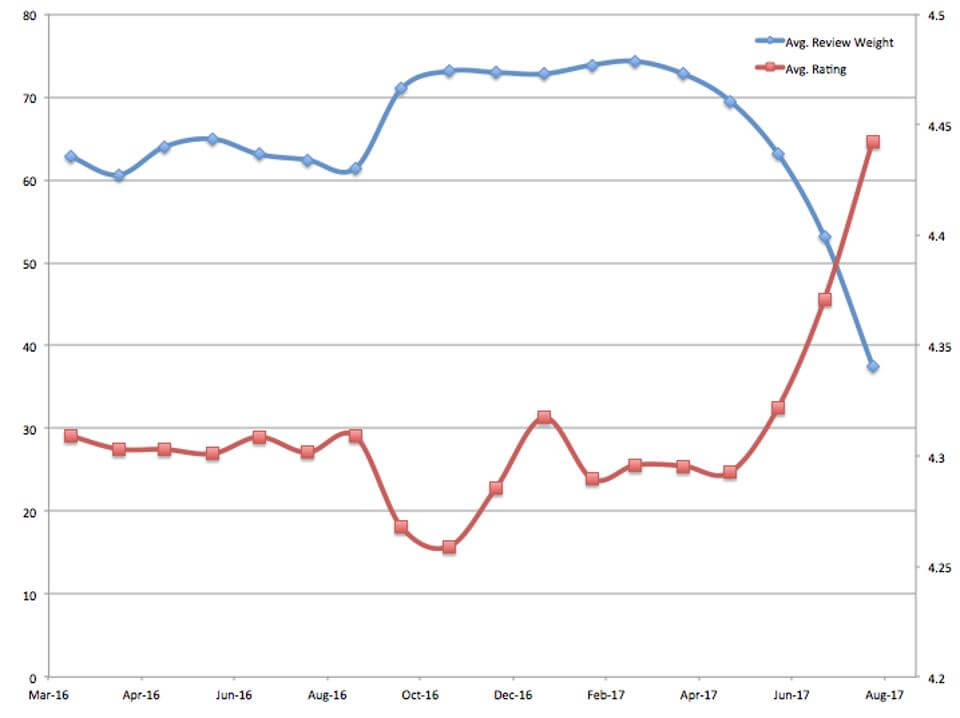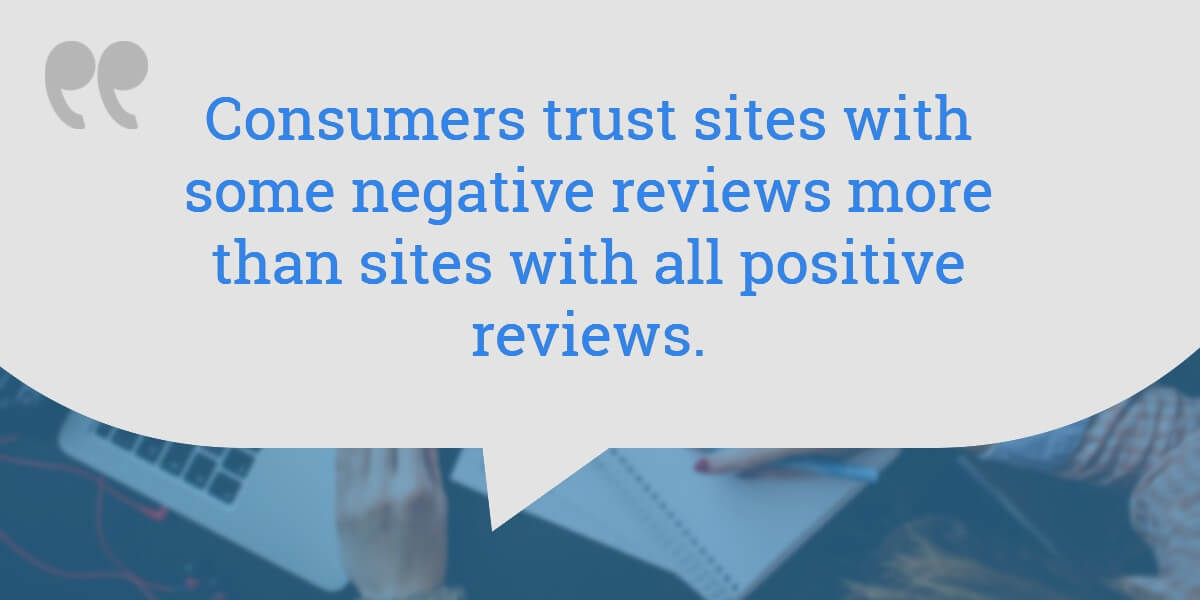You’re working hard to attract new shoppers, earn customers’ trust, and boost customer loyalty.
But there’s insidious content lurking on the web that has the potential to hurt your SEO, reputation, and overall business: fake reviews.
So how can you protect the authenticity of your product reviews and boost customer confidence in them?
Here we break down why fake reviews matter for online businesses, and what you can do about them.
Why Do Fake Reviews Exist?
Throughout the history of time (er, well, the history of the internet), there have always been spammers. The digital world and annoying scammers have a torrid love affair.
One reason fake reviews are so dangerous is that they pose as real human opinions.
While big publications like industry news outlets and magazines have heavy standards in place for fact-checking and assessing authenticity, online it’s a little different.
Social media sites, blogs, and review sites do not have the same policing methods, and eCommerce brands are at risk for falling victim to fake reviews or inaccurate information that doesn’t properly reflect them.
Even for the biggest sites, like Amazon, fake reviews have proven to be a difficult enemy to fight.
Recent data shows that the problem is getting worse. On Amazon, fake reviews are on the rise.

Why Do Fake Reviews Matter?
Consumers trust the voice of the masses.
That is why some people overlook a few terrible reviews when the majority are overwhelmingly positive, and vice versa.
Even search engines follow this formula. Content that is indexed well and digitally upvoted by users rises to the top of page rankings, while information that gets little attention is moved to the bottom.
But shoppers are most likely to convert when they trust the reviews, and trust comes from seeing a variety of positive and negative reviews.
More than 77% of buyers say that customer reviews impact their purchase decisions.

When fake reviews started gnawing away at Amazon’s reputation – and consequently its profits – the eCommerce giant turned up the heat on them. After a couple of lawsuits, there has been increasing awareness about the fake review industry and businesses have become increasingly watchful and cautious.
It is this caution that prompted Long’s Jewelers to fight a competitor who bought 200 fake reviews to tarnish their longstanding reputation. Long’s won in the end, but it wasn’t easy.


Any business with an online presence needs to know how to spot fake reviews.
Telltale Signs Of A Fake Review
The review contains incorrect information: This is a dead giveaway. However, to be able to spot such a review, someone will have to read all of the reviews and comments that your business attracts.
The review avoids details and sticks to generalizations: If someone harps on how bad their shopping experience with your brand was without giving any specific reason, it is not only a useless review but also likely a fake one.
The review has links to other sites: This one should immediately catch your eye. Merely listing a commercial website or a rival’s product is enough for you to know the reviewer is up to no good.
The reviewer has a dubious or thin profile: Unverified reviews or accounts lacking user information should always be double-checked.
The reviewer gives you a stock reply: Reviewers who meet any of these characteristics are usually fake:
- Not replying to your response to their review
- Responding with templated responses
- Giving irrelevant answers to your questions
- Not being able to describe how they used your product or further explain their complaints
- Not responding when you offer to fix the problem
The reviewer posts similar comments everywhere: Read other reviews posted by a suspicious reviewer. If all of their feedback on various websites follows a similar format, they likely have an ulterior motive.
Once you are able to spot fake reviews, how do you negate their impact?
How Do You Respond To Fake Reviews?
While business owners now know a lot about how to deal with negative reviews and convert them into opportunities to showcase their customer service, there’s still no clarity on how to deal with fake reviews.
However, these deserve as much tackling as the genuine negative ones.
Here are a few immediate steps you can take.

Respond as you would to any review: For reviews that you aren’t sure about, engage the reviewer to establish the authenticity of the post. Carry on the conversation in an approachable and professional way, and your site visitors will be able to tell if the review and the reviewer are worthy of being taken seriously.
Flag spam and other obviously fake reviews: If you encounter spam or reviews that you are convinced are fake on forums, social networks, niche business directories, or major listing and review platforms, flag them as inappropriate to bring them to the moderating team’s attention.
Delete spam from your social media pages: Remove spam posted on Facebook, Twitter or any other social media pages as soon as you notice it.
Things are not always black and white as discussed here. Some honest reviews are hilariously bad while certain malicious reviews do a good job of appearing authentic.
While you may not always be able to tell the difference, implementing these steps will help you get it right more often than not.
How Can You Protect Yourself From Fake Reviews?
- Use a system that verifies reviews. At this point, there’s no excuse for not using a reviews system that verifies reviews. But to really prevent spam, you need to make sure reviews aren’t just written by real people, but people who really bought your product. As a brand, it’s important to do everything to protect yourself from fake reviews and instill trust in your shoppers that your reviews are real.
- You can’t completely protect yourself against fake content, but you can reward honest content. For example, display verified authenticity badges that instantly filter out authentic content and questionable content for shoppers. By rewarding authentic content, you show shoppers you value the truth.
- Don’t hurt yourself by only showing positive content. Contrary to popular belief, it’s actually good to display negative reviews. Consumers trust sites with some negative reviews more than sites with all positive reviews, so don’t be afraid to display them. You can even use them to your advantage by commenting back to users. This publicly displays that you care what your customers have to say, and can convert unsatisfied customers into huge brand fans. You just need to know how to respond to negative reviews.
The Way Forward
Some businesses engage in unethical practices to get ahead of their competitors.
Put someone in charge of reviewing all of the reviews your business receives so that you don’t end up becoming the victim of a fake review campaign. Train them in spotting fake reviews and responding to the negative (as well as the positive) ones.

It will be time-consuming, but it will be worth it if you want to keep your reputation clean and your business growing.
In parallel, focus on getting a steady stream of sincere and candid reviews from customers who really benefited from your product or faced genuine issues with it. If you’re an eCommerce retailer, here are a few quick ways to do this:
- Add rating or review widgets to your product pages – and connect these with your social pages – to get customers to write reviews and then show it off everywhere. For instance, Shopify allows you to integrate Yotpo to prompt customers to share reviews on your website.
- Use email targeting to solicit reviews from customers who have recently purchased from you. Amazon usually sends such emails within three to five days of your purchase. They also give you the option to send text, video or image reviews, which is an ideal practice to add variety and authenticity.
- If you have a brick-and-mortar store, generate reviews from in-store customers and publish them online (with permission). You can send review requests via email to a select list of customers, integrate your reviews solution with your loyalty solution, and send them customized offers.
A Final Word On Fake Reviews
Fake reviews exist. But you can take the proper steps to protect your business from them. Additionally, you can show customers your authenticity by displaying real reviews — whether negative or positive — to show that your customer reviews may not all be five stars, but they’re all real.
Leverage the positive power of negative reviews with this free guide today!














 Join a free demo, personalized to fit your needs
Join a free demo, personalized to fit your needs